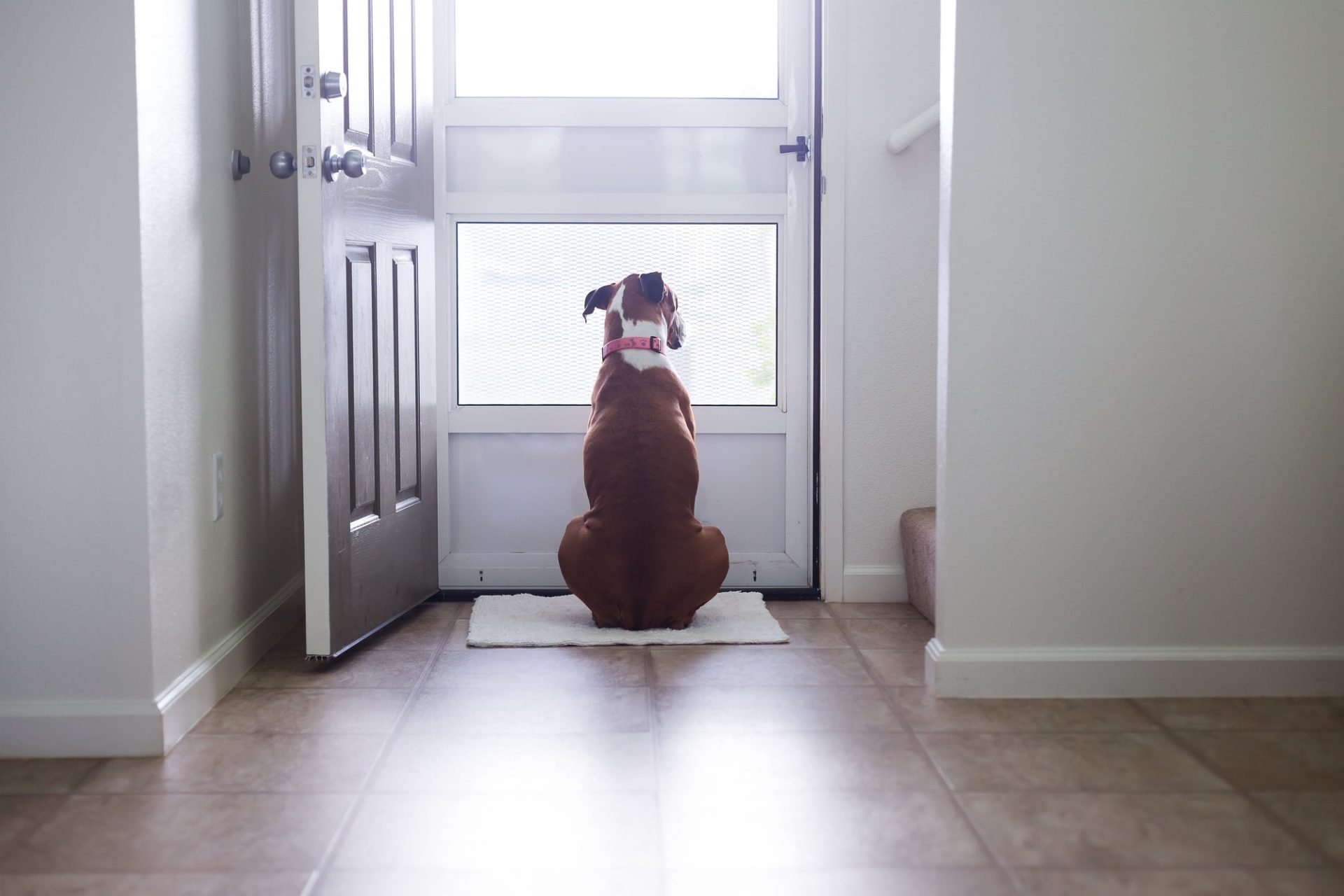Do you even remember what your doorbell sounds like without a deafening chorus of dog barks following it? Good news: some simple training can help you open your door in peace again.
Why Do Dogs Bark at the Doorbell?
Every dog breed and individual dog is different, but there are some common reasons why your pooch is going bark wild. First things first, hearing the doorbell or someone knocking at the door is loud, startling, and an interruption to their normal routine. (Even as humans we can relate!) But your dog doesn’t know to expect your friend stopping by or the mail carrier delivering a package, so it’s a surprise every time.
For some dogs, this can be a negative emotional response. Loud, unexpected noises can be scary for nervous dogs and you can watch their body language to understand how they’re feeling. If their ears and tail are low while they bark, your nervous nellie is probably a bit on edge. Barking can also be a territorial response to a perceived threat—aggressive posturing or fur standing on end is your dog’s way of saying, “Intruder alert!”
On the other hand, many dogs love getting guests! Barking can be from excitement, curiosity, or just a desire to let you know what’s up. If your dog is wagging their tail while they zoom from the door to the window to you and back again, that’s big time doggy body language for, “OMG did you see a friend is here?!” Even friendly barking can be disturbing to you and your visitors, though—especially if it’s followed by an excitable dog jumping up on your visiting grandma.
No matter the reason for their barking, you can train your dog to stop barking at the door with a little patience—and a whole lotta treats.
How to Train Your Dog to Stop Barking at the Doorbell
The goal here is twofold:
- Teach your dog that the doorbell going off is a cue for a relaxing, positive experience.
- Allow you to answer your door in peace without your visitors fearing for their shins.
Start the process by desensitizing your pup to the sound of the doorbell or a knock at the door.
Food rewards make everything easier, so pull out their favorite high value treat (even better if it’s sticky like peanut butter and takes work for them to lick up). Give them a taste of the treat, and then either play a sound effect of the bell or knock on your phone or computer or have a partner produce the real sound at your door. If they react, gently redirect their attention to the treat and praise them as soon as they sit calmly and keep eating. Repeat the process until they don’t even start barking at the sound and are instead just excited to enjoy something drool-worthy.
Once the doorbell itself isn’t so alarming, start to pair that delicious treat with a location. Pick a spot where you want your dog to sit every time the doorbell rings. Their bed is a good spot, or a designated rug nearby. When you set off the doorbell sound again, use that tempting treat to lure them to that spot as you give them a command to “go to place.” Once they’re settled there, reward your dog with the goods and plenty of praise.
When they master going to their place when the doorbell goes off, it’s time to set the whole thing in motion. Your dog also understands that the doorbell means you open the door for someone, and they probably deem that bark-worthy (and possibly jump-worthy) too. Begin adding in more realistic elements in every training session.
Start by sending your dog to their place and then approach the door when you hear the bell. Once your dog learns to stay settled during that moment, it’s time to level up again. Repeat the previous steps and begin opening the door. Then add in a training partner on the other side of the door. Try having a conversation with them at the door until you work up to inviting them inside.
,

